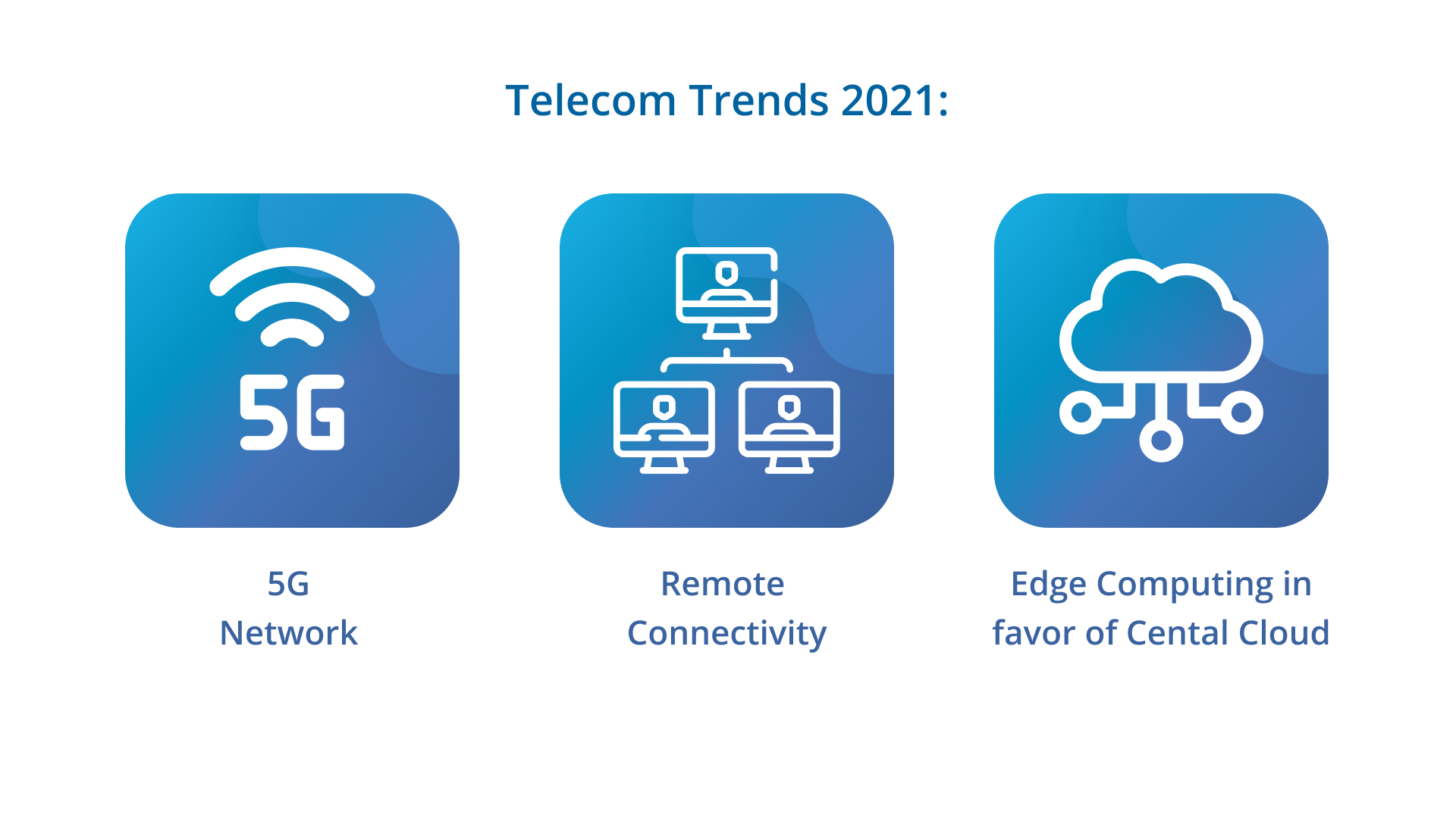Height8
17 February 2021
Telecom Trends 2021
Necessity is said to be the mother of inventions and the COVID-19 pandemic of 2020 forced the telecom industry to adopt innovations. It forced the world to do things differently whether the working style of people or the operations of businesses has changed completely.
The pandemic impacted the telecom industry by increasing mobile data consumption, voice traffic, and residential broadband. These impacts forced the telecom industry to improve the services and adopt new technologies to enhance the customers experience.
Gone are the days when the telecom industry solely depends on manual operations like customer engagement, sales, etc. With the changing market scenario, market participants must be equipped with new-age technologies and innovations.
So, what are the major trends that will transform the telecom industry in 2021?
Lets explore!
Telecom Industry Trends 2021:

5G
We all remember the excitement of most of the telecom companies planning to unveil a better, faster, and stronger network - a.k.a. 5G network in 2020. But it was put on hold due to COVID-19.
In 2021, with so many people working online, communicating over video calls, increasing data consumptions, etc giving the sign to the telecom companies for the need of a faster and better network. The majority of smartphones are now compatible with 5G, which is expected to become the de facto standard by the end of 2021 for all smartphones. In 2021, the telecom companies will implement 5G networks and offer 5G services gradually. By delivering ultrafast speed and ultralow latency, 5G will transform the network experience of consumers.
Remote Connectivity
From healthcare to education, everything went remote in 2020. Virtual clinics were set up with the help of telco providers. Telemedicine saw a huge boost in terms of adoption and deployment for ensuring compliance to the social distancing protocols and saving up the hospital capacity.
Considering the health of students, physical school classes take a turn on virtual online classes. Online classes and video conferencing becomes new normal education.
Many businesses started working remotely from their homes, Meetings becomes virtual, premise working shifted towards working through digital platforms. Most of the organizations make Work From Home permanent for their employees.
Virtual clinics, telemedicine, virtual education, or virtual meetings - nothing is possible without telecommunication. Such a rapid shifting towards remote connectivity shows the power of telecommunication. At the same time, it gave rise to new demands for more digitally advanced platforms that would support many functions file sharing, remote collaboration, video conferencing, online events, and many more.
Edge Computing in favor of Central Cloud
According to the foresters, Edge computing was promising but still developing. In 2021, new business models will emerge the deployment of the edge in production.
According to a recent report, edge computing will drive approximately $7 billion in revenue by 2025. 2/3rd of this revenue will accumulate to the cloud players, telcos, and enterprises that will play an important role in providing connectivity.
Many tech analysts believe that edge computing will transform the telecom industry in 2021 as a disruptive technology. In addition to reducing latency, edge computing will speed up the processing of real-time data collected and transmitted through connected devices.
Apart from the above trends, other technologies like NFV, AI, IoT, OTT offering, VR, etc will be in the limelight in 2021.
Closing Thoughts
In 2021, the above-mentioned trends will create a massive transformation in the telecom industry. Telcos need to leverage more of these emerging trends that hold the potential to revolutionize the digital customer experience.
All service providers have to follow these trends to remain ahead of this competitive world. We at Height8 Technologies help service providers to seamlessly increase their customers experience by constantly following the changing industry trends.
Contact us today to get more details about these latest telecom trends!
